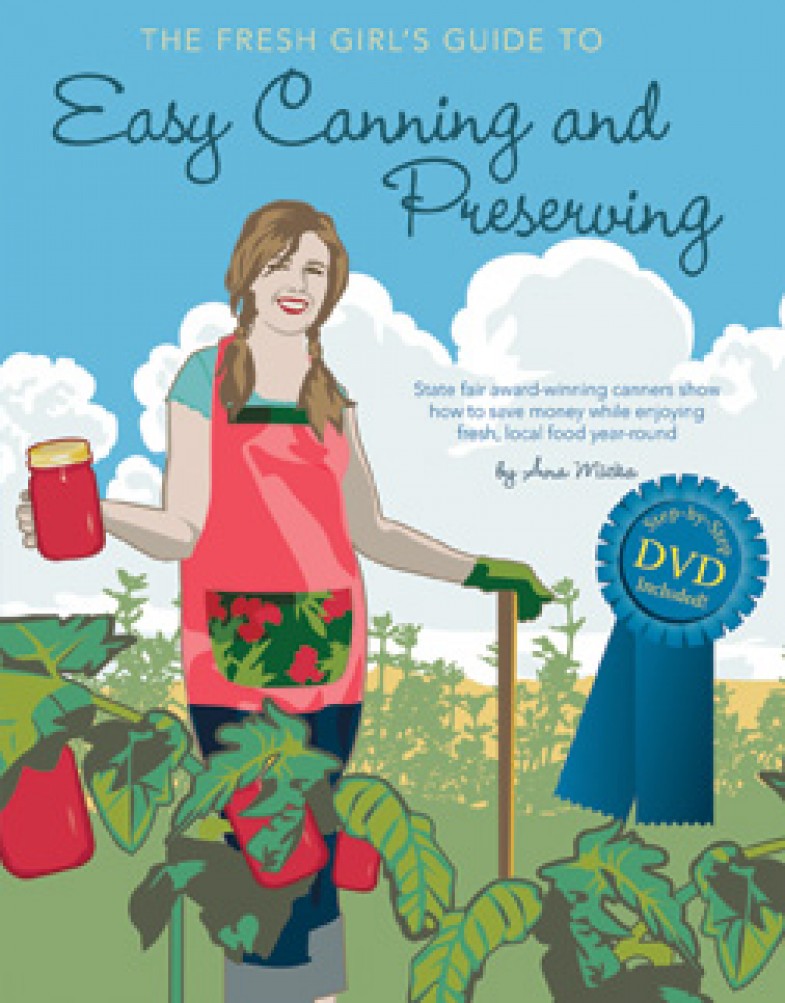The kitchen is the spot where we take advantage of the commons three times a day. Recipes—whether for scrambled eggs or lavish gourmet feasts—are freely shared by cooks everywhere. And while they often bear the names of their creators (Aunt Bev’s Triple Loaded Chocolate-Butterscotch-Macadamia cookies), we are free to use them and improve them any way we please. (Cousin Phil’s Chocolate-Butterscotch-Macadamia-Cashew-Marshmallow cookies.) Copyrights don’t apply to our use of even the greatest chefs’ specialties. And swapping the secrets of our favorite dishes forms strong bond between people.
Ten years ago, OTC Co-director Ana Micka—seeking a way to enjoy more fresh, healthy, additive-free food through the long Minnesota winter—taught herself to can produce. With the rising tide of interest in local foods and in saving money to survive tough economic times, she often found herself offering tips to friends who wanted to preserve the taste of summer from backyard gardens and farmer’s markets.
That was the genesis of her new book The Fresh Girl’s Guide to Easy Canning and Preserving (Voyageur Press) and the accompanying DVD. The book outlines the basics of food preservation, and serves up enticing recipes from around the world to get you started on your own project to capture the bounty of the commons in a jar.
This led to her doing frequent canning demonstrations at farmer’s markets and community events and to founding the Food Preservation Network – a network hosting community canning events (www.FoodPreservationNetwork.net).
Below is a sugar-free applesauce recipe developed by Paula Pentel and Callie Wilson, which one second place at the Minnesota State Fair in 2006.
Paula Pentel and Callie Wilson’s Red-Ribbon Applesauce
Makes 5 pints (2.4 liter)
Ingredients:
24 apples (mix 2-3 varieties if possible)
Water
1 tablespoon (15 ml) ground cinnamon
5 teaspoons (25 ml) lemon juice
1. Boil water. Submerge jars, lids and any kitchen tools you will be using for 2 minutes in boiling water.
2. Grab a hot water bath canner, a large pot with a canning rack and lid. You can use regular pots with lids as long as they are large enough to allow for 2 inches of water above the tops of the jars.
3.Fill your hot water bath canner 2/3 full with water and bring to a boil. Add enough water to submerge the jars with 2 inches remaining above the lids. (Adding two tablespoons of vinegar helps if you have hard water.)
4. Wash, core and cut apples.
5. Place the apples in a heavy-bottomed stainless or enamel pot. Add about an inch of water. Cook apples until soft, about 15-20 minutes.
5. Strain or mash cooked apples. You can use a food mill, blender, food processor or do it by hand to get the desired consistency.
6.Add cinnamon.
7. Using a measuring cup or ladle along with a funnel to fill the jars with applesauce. Leave a ½ headspace (1.3 cm) at the top of the jar. Use a non-metallic spatula or skewer to remove air bubbles. Secure ring and screw lid.
8. Place jars in the canning rack and lower into the boiling water in the canner. Cover, return to a boil and process for 20 minutes (adjusting for altitude if necessary). Do not start your timer until the water returns to a boil.




